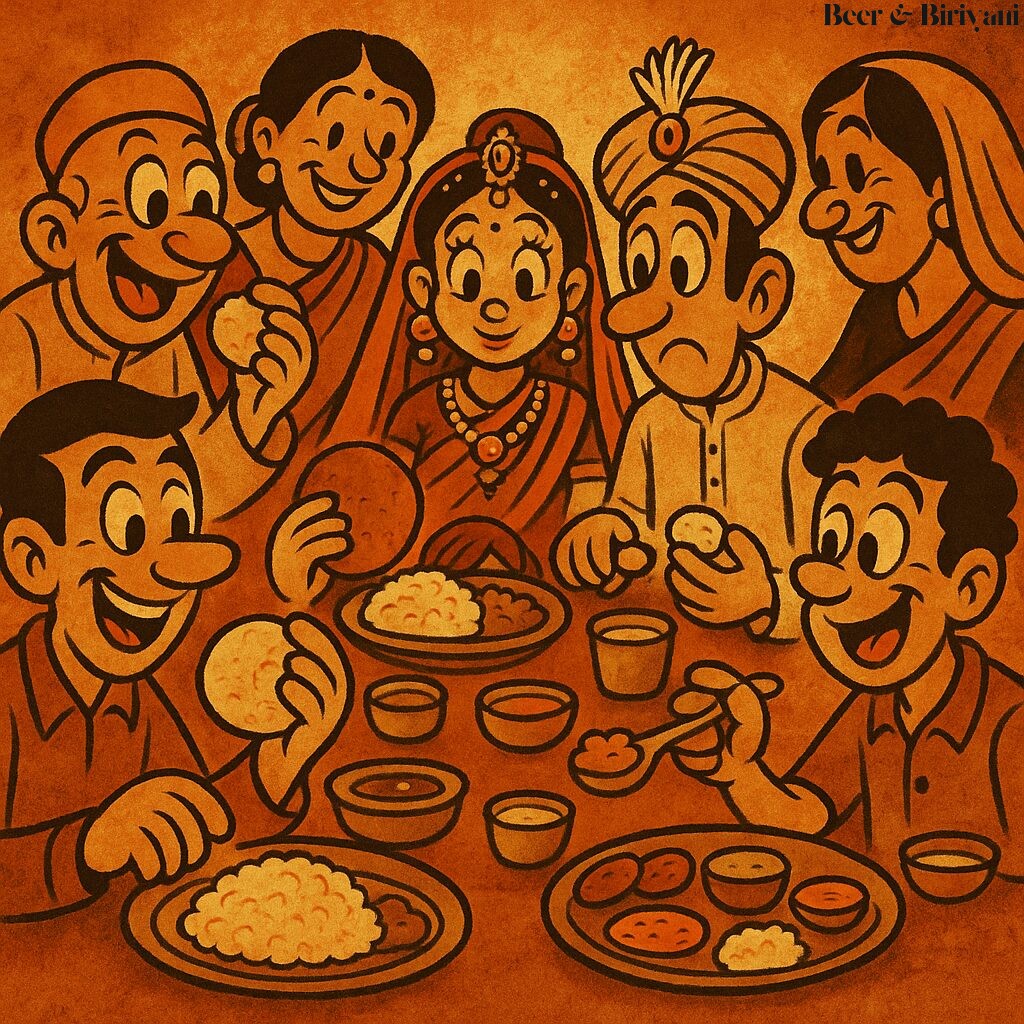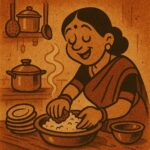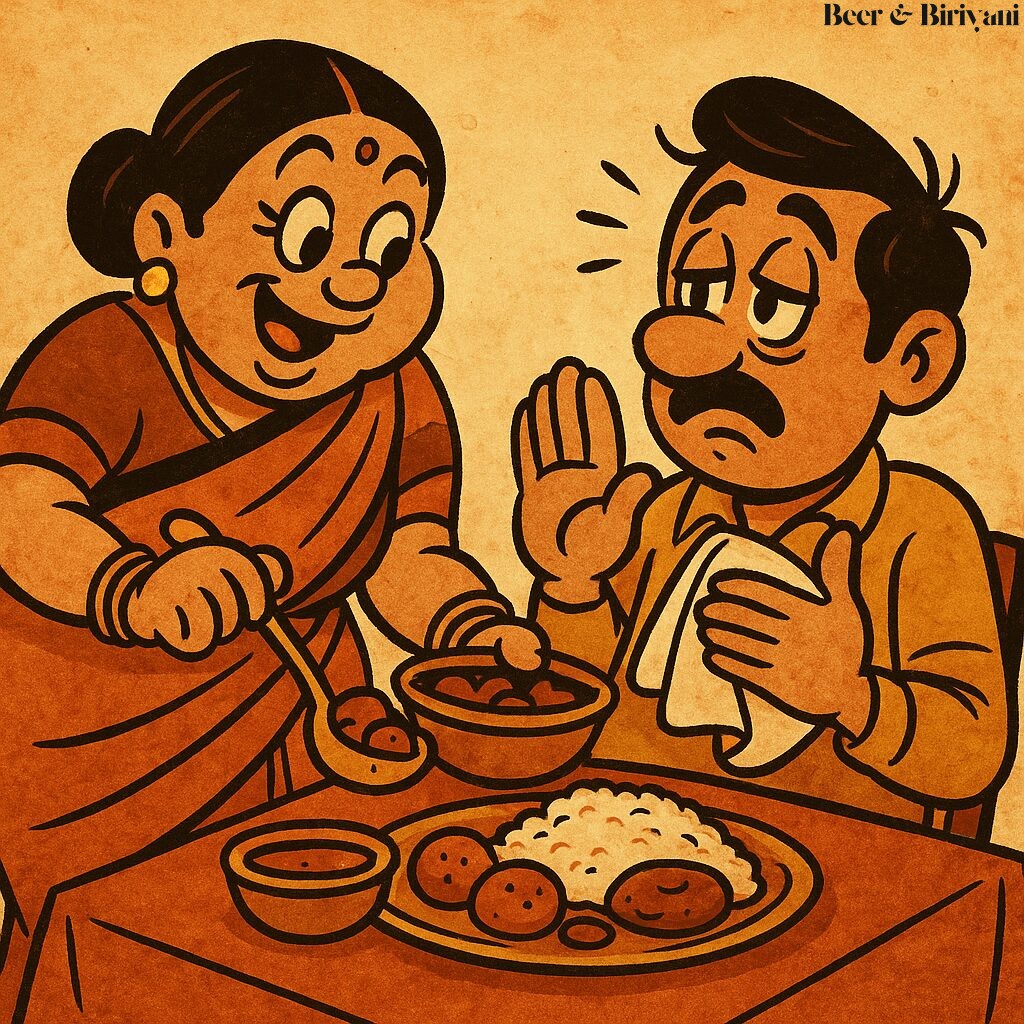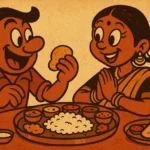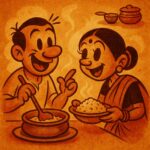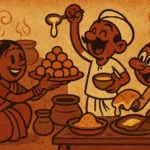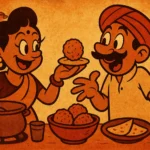Some families pass down heirlooms. Mine passed down dinner sequences. In our Mumbai home, the order of operations on a dinner plate wasn’t up for debate. It was dal-chawal first, always. Followed by roti. If you wanted to do the reverse, you had to state your case—and preferably have a doctor’s note.
Now, decades later and halfway across the world in Austin, I find myself watching the order in which people eat like some sort of anthropological experiment. Because nothing gives away where you’re from—linguistically, geographically, and sometimes matrimonially—quite like whether you reach for the roti or the rice first.
The Dinner Table GPS
Let’s be clear: this isn’t just a preference. It’s a compass. It tells you what part of India someone’s ancestors trudged across, what crops grew around them, and what kind of grandmother governed their childhood with a ladle in one hand and hot phulkas in the other.
North India is generally a “roti first” zone. Wheat fields, tandoors, saag-roti combos—all point to a strong carbohydrate loyalty that starts with flour. Whereas the South? Rice reigns. In Tamil Nadu, Andhra Pradesh, Kerala—rice isn’t just a staple. It’s the plate. The base. The default. Everything else—dal, sambar, rasam, curd—is just a reason for the rice to exist. Eat roti first in a Chennai household and you might get a side-eye that says, “Are you trying to save space for dessert already?”
Then Comes Marriage
I once attended a wedding where the bride’s family served roti first, then rice. The groom’s family did the reverse. Nobody said anything—but there was a quiet tension at the buffet line. Plates hovered mid-air. A few uncles clutched their kulchas like diplomatic briefcases. It wasn’t a crisis, but you could feel the culture clash.
This is how it often begins in marriage: a thousand small differences, starting with food. One of my friends from Karnataka married into a Punjabi family. For her, rice was the beginning and end of dinner. Her husband needed roti to feel like the meal had begun. Now, they do what most mixed-household couples do: pretend the order doesn’t matter and eat both at once—while silently judging each other.
What Comes First Shapes the Meal
Roti-first meals are different in rhythm. You tear. Scoop. Dip. It’s about intimacy—using your hand to grasp sauce, feel texture, pace each bite. Rice-first meals are more fluid. You mix. Fold. Let flavors mingle and run into each other. It’s not a scoop—it’s a pour. One is geometry. The other is geography.
Even the gravies adapt. Paneer butter masala clings to roti like it was designed for it. Sambar insists on being soaked into rice. Rajma tolerates both but secretly prefers rice, especially if there’s a puddle of ghee involved. And baingan bharta? Honestly, it just wants some love and won’t complain either way.
It’s a Family Thing
In our house, rice-first wasn’t just tradition—it was timing. My mother made the rice early, the dal simmered slowly, and by the time you were done with your second helping of chawal, she’d magically appear with puffed-up rotis, still warm and ready to catch stray pickles. It was less meal and more performance art.
My father, a strict rice-first man, insisted that roti-first folks “don’t know how to end a meal properly.” For him, rice was closure. He needed that last soft mound of curd rice with a crunchy mor milagai to feel like the day had made sense. If there was no rice, he’d go to bed unsettled—like a TV show had ended without credits.
Trying to Explain It Abroad
In Austin, when I tried to explain this to a friend who asked why we needed both roti and rice in the same meal, I floundered. It’s not need, I wanted to say. It’s identity. It’s ancestral habit. It’s about balance. Like starting with action and ending with romance. Like an AR Rahman song that begins with drums and ends with strings. You need both. For the arc. For the symmetry.
And Now, Both—Maybe
These days, I’m more fluid. Sometimes roti first, sometimes rice. Sometimes both on the same plate at the same time—something that would’ve shocked my grandmother, who believed mixing them was a sign of moral confusion. But I like it. I like not knowing what comes next. I like letting my plate be a little mixed, a little regional, a little messy. Like the rest of me.
But when I’m tired, when I need comfort, when I want to taste home—not the place, but the feeling—I reach for rice first. Because that’s where it began. And that’s where it still makes the most sense.
Born in Mumbai, now stir-frying feelings in Texas. Writes about food, memory, and the messy magic in between — mostly to stay hungry, sometimes just to stay sane.

